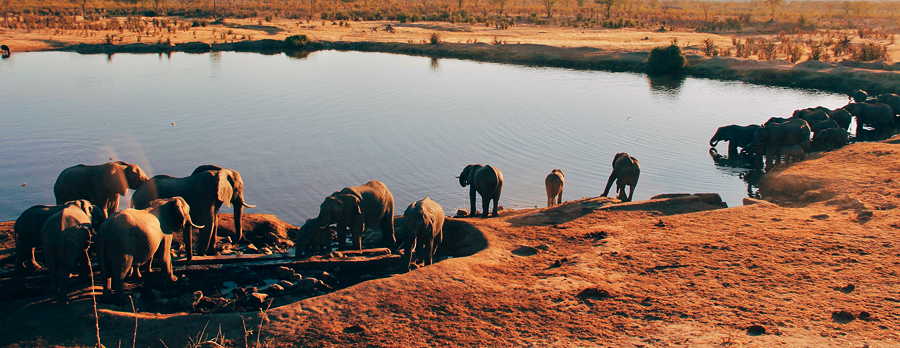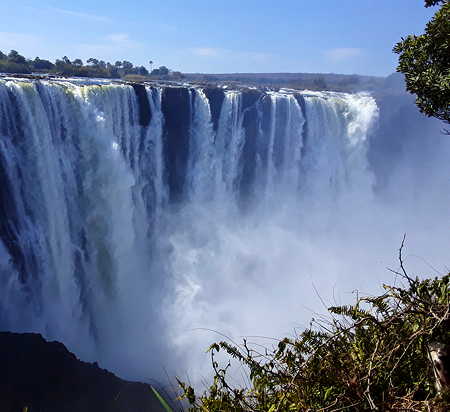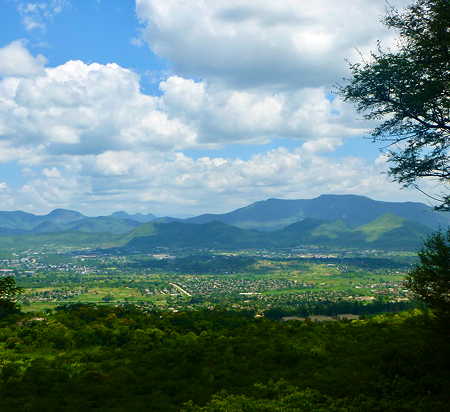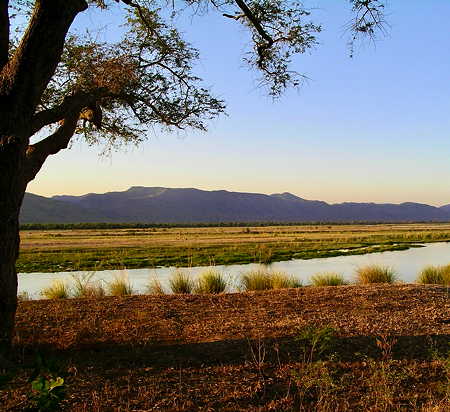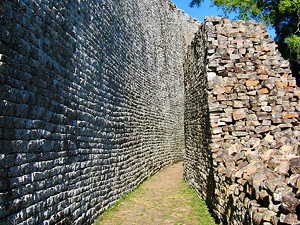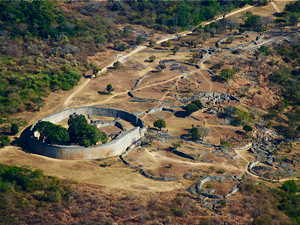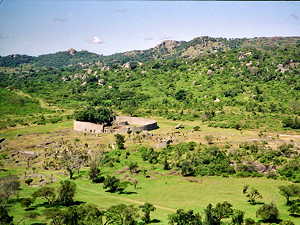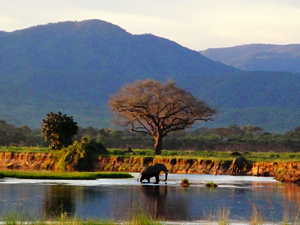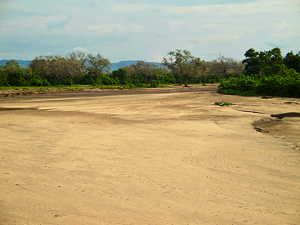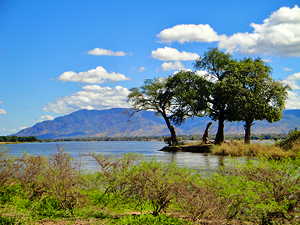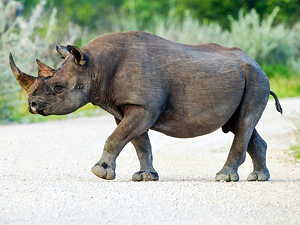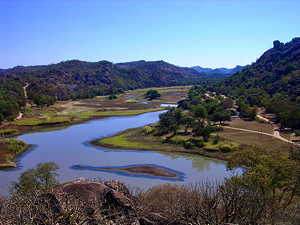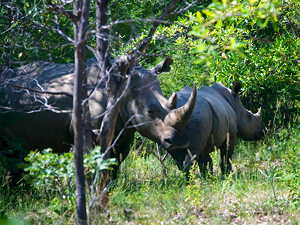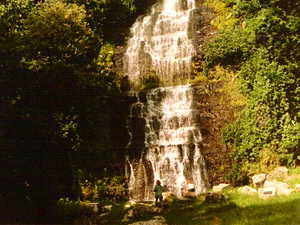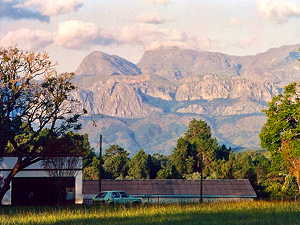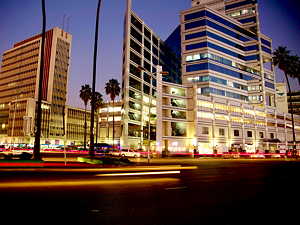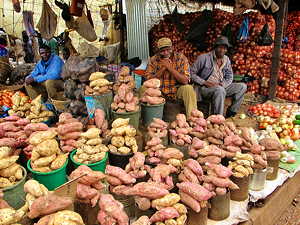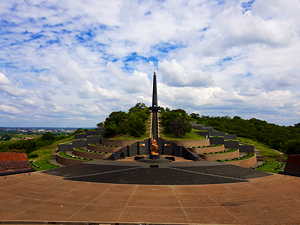Things to do in Zimbabwe, Africa
Zimbabwe is known for its vastly diverse wildlife and endless dramatic landscapes which never cease to leave a visitor in awe.
Natural wonders, breathtaking scenery and, of course, the exotic wildlife, a visit to Zimbabwe is truly a once in lifetime destination. Walking safaris can be found next to ancient ruins and where the chaotic capital of Harare is a prelude to the serenely quiet mountainous regions in the East.
Everybody knows Victoria Falls, so here are some of the less known yet inspiring places to visit whilst you are in Zimbabwe.
1. The Great Zimbabwe Ruins
Located approximately half an hour from the second largest city in Southern Zimbabwe, Masvingo, the Great Zimbabwe Ruins were once home to the nation's monarchy
Many locals say that visitors cannot fully understand this captivating nation until they have explored Great Zimbabwe (also known as the Great Zimbabwe Ruins or the Zimbabwe Ruins), which was Zimbabwe's capital during the Iron Age.
Built between the early 11th and 14th centuries, and exceeding 722 hectares in area, the Ruins were once home to the royal monarch and over subjects in the surrounding areas.
During its time and even to this day, the Zimbabwe Ruins are said to be one of the largest stone structures in Southern Africa and the immense walls surrounding this Ruins only emphasize this point.
Standing over 5 metres tall, the stony perimeter was constructed without the use of mortar giving a unique feature to this ancient place and a great admiration for the talent of these people given the times.
Taking a tour of the Great Zimbabwe Ruins is always best with a tour guide who can explain the many compounds and enclosures around the fort, along with each of the rooms in the King's residence which overlooks the surroundings from the top of a hill dominating the skyline.
Your visit is likely to be hot and humid, so plenty of drinking water is a must. We recommend staying in the beautiful nearby cabins, which will allow you to explore the ruins later in the day after the temperature has dropped.
2. Mana Pools National Park
Mana Pools National Park is a 2,200 square kilometre nature reserve in the north of Zimbabwe.
Beautiful and rugged, and consisting of some truly awe-inspiring landscapes, this enormous National Park is a wild and overgrown haven for exotic wildlife.
The concentration of flora and fauna is attributable to the Zambezi River, Africa's third largest waterway, which flows through the heart of Mana Pools.
The name "Mana" is a reference to the four pools that are located in the interior of the Park. They were originally part of the Zambezi, becoming ox-bow lakes over millions of years. The largest pool, the unimaginatively named 'Long Pool', is over 6 kilometres in length.
The Park is best known for its elephants, lions, leopard, cheetah, zebra, waterbuck, other antelope species, hyena, over 450 species of bird, and aquatic waterlife (including the hippo and the Nile crocodile). Situated in the far north of Zimbabwe, Mana Pools is remote and offers a real wilderness experience.
Mana Pools, together with the adjacent Sapi and Chewore Safari Areas, were named a UNESCO world heritage site in 2013.
A walking safari?
Immersive and very personal, a walking safari offers the opportunity to explore a sublime mix of grassy floodplains, riverine forests, and rugged woodlands while also encountering some of South Africa's most beautiful (and dangerous!) animals.
Due to the large quantity of water, wildlife can usually be found in high variety such as elephants, waterbuck, and buffalo who graze on the grassy floodplains or some of the more dangerous predators such as wild dog, lion, and leopard.
Thankfully, many precautions are taken to avoid any threatening encounters by the highly trained rangers who know the surroundings intimately.
Taking a wildlife safari in Africa is always an exciting affair, but taking one on foot is a very different experience. It puts you out in the open, vulnerable to the surroundings and right in the heart of all the action.
So give this activity a miss if you don't fancy creeping around corners, between bushes and beneath acacia trees, unsure what you will encounter next!
Other facilities
Mana Pools National Park offers visitors remoteness and tranquillity. So don't expect 5-star luxury. The Park does, however, offer five lodges (two large lodges, and three four-bedroomed thatch lodges), a large communal campsite on the Zambezi River, and a number of exclusive campsites (so-called because they only allow 2 vehicles and a maximum of 12 campers).
Aside from taking in the scenery and animals, Mana Pools offers canoeing and fishing in the Zambezi.
Although no guide will ever guarantee sightings, Chobe National Park is one of the best places to see wildlife in Africa.
3. Black Rhino Safaris at Matobo National Park
As mentioned with the Mana Pools, a walking safari is unique, immersive and intimate experience. This too is the case with the stunning Matobo National Park, although the goal of this particular walk—the endangered black rhino—is a little different.
Matobo National Park
The Matobo National Park is a 250 square kilometre national park in the south-west of Zimbabwe, close to Bulaway (the country's second city).
Awarded UNESCO World Heritage Status in 2003, it is best known for its 2-billion year old granite hills which rise from the plain, game (which inhabit a fenced off area of about 100 square kilometres) and 175 species of bird (including the world's highest concentration of black eagles).
Some of Africa's most majestic landscapes can be found in Matobo National Park (also known as Matobo Hills) and also an incredible bio-diversity, one of the true highlights of this safari. For the bush, the tracks, the rivers and general flora are central to the experience where an experienced guide will take you inside this greater bio diversity and uncover a fascinating eco-system.
In terms of game, the Park is famous for its white and black rhinoceroses, sable antelope, impala (mid-sized African antelope), giraffes, and leopards.
Black Rhino Safaris
The opportunity to visit the endangered black rhino in a protected environment is one that cannot be passed upon.
The critically endangered black rhino (diceros bicornis) actually ranges in colour from brown to grey. They have a distinctive long horn (usually about 50 centimetres in length), and a shorter second horn, used for defence and for digging up roots.
The average male stands up to 1.5 metres tall, and up to 4 metres in length, weighing about 1,400 kilograms. That is magnificent enough, though the largest recorded male weighed almost 4,000 kilos and had a horn that was almost five feet long
Have you ever wanted to learn how to track animals? Your guide will help you learn and it is not for the faint of heart, as you will be doing so in a very real and wild setting.
An encounter with a black rhino is not something that everybody is able to experience. But for those with a firm constitution, it is truly a once in a lifetime opportunity.
Black Rhino Safaris is, in fact, an tour operator in itself which allows you to do all of the above in safety. They are eco- and environment friendly (as one might expect of a family company established 23 years ago) while catering to all age groups. Including lunch, transport, an experienced guide and a genuinely wonderful adventure, a walking safari in search of Black Rhino is one of the most amazing things to do in Zimbabwe.
4. Hiking in the Chimanimani Mountains
The Chimanimani National Park is located on the Zimbabwe-Mozambique border in the far east of the country. Rugged and unspoiled, the region itself is an abstract beauty infused with falling gorges and peaks rising to 2,436 metres in height.
Through the mountain formations and various springs, there are many streams cascading down and providing a water source to diverse wildlife including bushbuck, eland, sable, klipspringer, duiker and, of course, that rare and certainly interesting encounter with a leopard.
During the hike, one can enjoy the delights of a rare thick, moist evergreen forest with approximately 340 species of birds, snakes, plants, shy cats and butterflies. And then there is the remoteness, unlike most safaris, there are no roads or pathways which give the experience a very natural and authentic feel which cannot be found in tourist populated areas.
Narrow trails winding between rocky outcrops, peaks and bush, a hike through the Chimanimani National Park consists of a wide variety in terms of terrain, while the soaring views from the top are as picturesque as they come. Local tour guides will always be on hand to organize a group or private trip into the mountains while a newly renovated lodge, Heaven Lodge, offers nice accommodation on a hillside with stunning views of the mountains.
While this particular area was once the scene of some unsavory scenes, namely the unfair forced eviction of local farmers for political gain, Chimanimani is now a friendly community with ample natural attraction and some incredible hiking trails in very remote surroundings.
Isolated and undeniably scenic, hiking through Chimanimani National Park is an opportunity to get away from the busy city and fall in love with nature.
5. Harare
Although Harare may not consist of many natural wonders or breathtaking landscapes, it does have a unique and tangible charm.
Home to about 1.6 million people, and found towards the north-east of the country, Zimbabwe's capital offers local heritage, fine art galleries and museums, frenetic traffic (!) and bustling marketplaces.
Museums and galleries
Why would you want to go to Harare though, what does it really offer? Harare is home to some of the finest galleries and museums throughout Zimbabwe which is ideal for anyone interested in the history of the nation.
Whilst visitors shouldn't expect museums of the quality found in the developed world, you can while away a happy hour in the small but well-presented Zimbabwe Museum of Human Sciences ($10 entrance fee), and most people recommend visiting the small collection at the National Gallery of Zimbabwe ($1 entrance fee).
A great recently-opened attraction is the Shona Sculpture Gallery, displaying a variety of locally produced sculptures in a tranquil and well-maintained garden.
Learning the history of Zimbabwe creates a greater sense of significance when exploring places such as the above mentioned Great Zimbabwe Ruins and an understanding for why this city has stumbled to a halt in recent years.
Wildlife and markets
Contrary to popular belief, Harare is also home to some extraordinary wildlife sanctuaries and adventure opportunities. For instance, the Kuimba Shiri Bird Sanctuary, found about 10 miles to the west of the capital, gets rave reviews for its birds of prey display each day at 4pm.
But the backbone of this city is the real attraction of a visit, where busy markets, enthusiastic locals and impressive facades hide the economic and political woes that Zimbabwe has encountered in the past 20 years.
Harare today
Politically and financially unstable, one can easily see how Harare was once a great and prosperous city. But the broken lamps along the roadside, endless potholes on the road, dilapidated buildings and closed shops are enough evidence of how the city has struggled to overcome the past two decades with a struggling economy.
